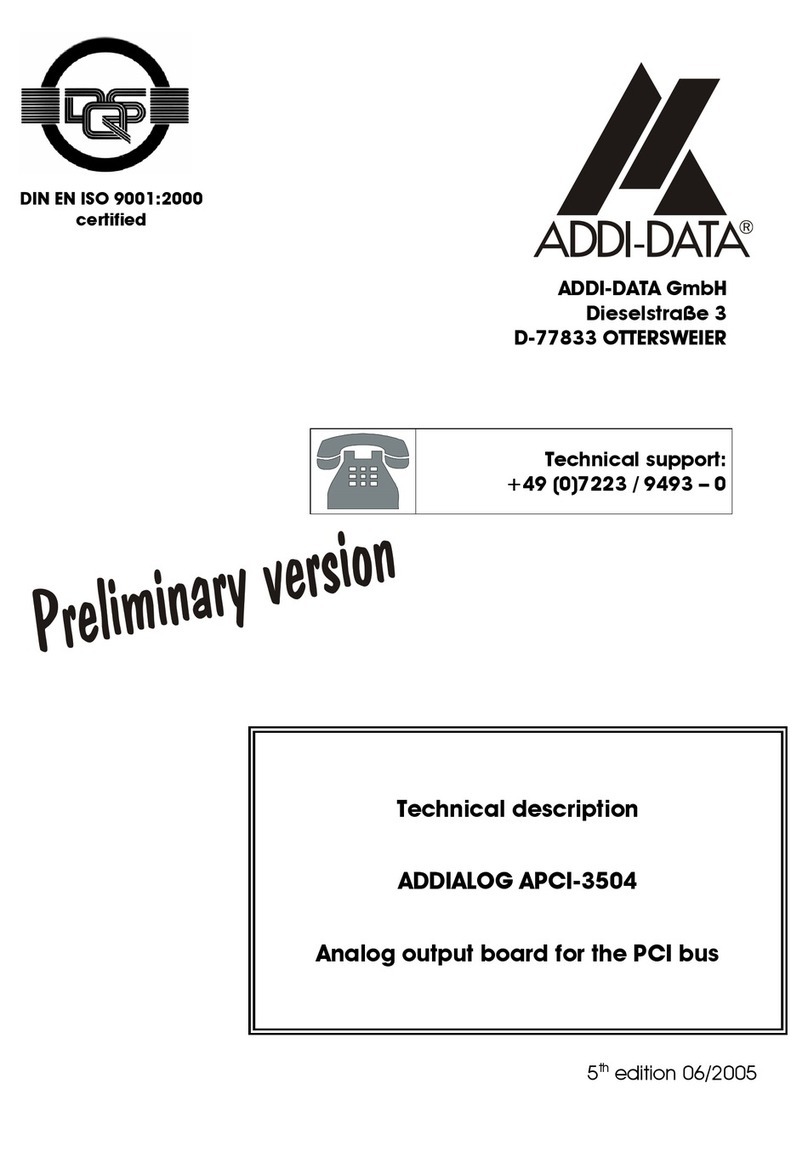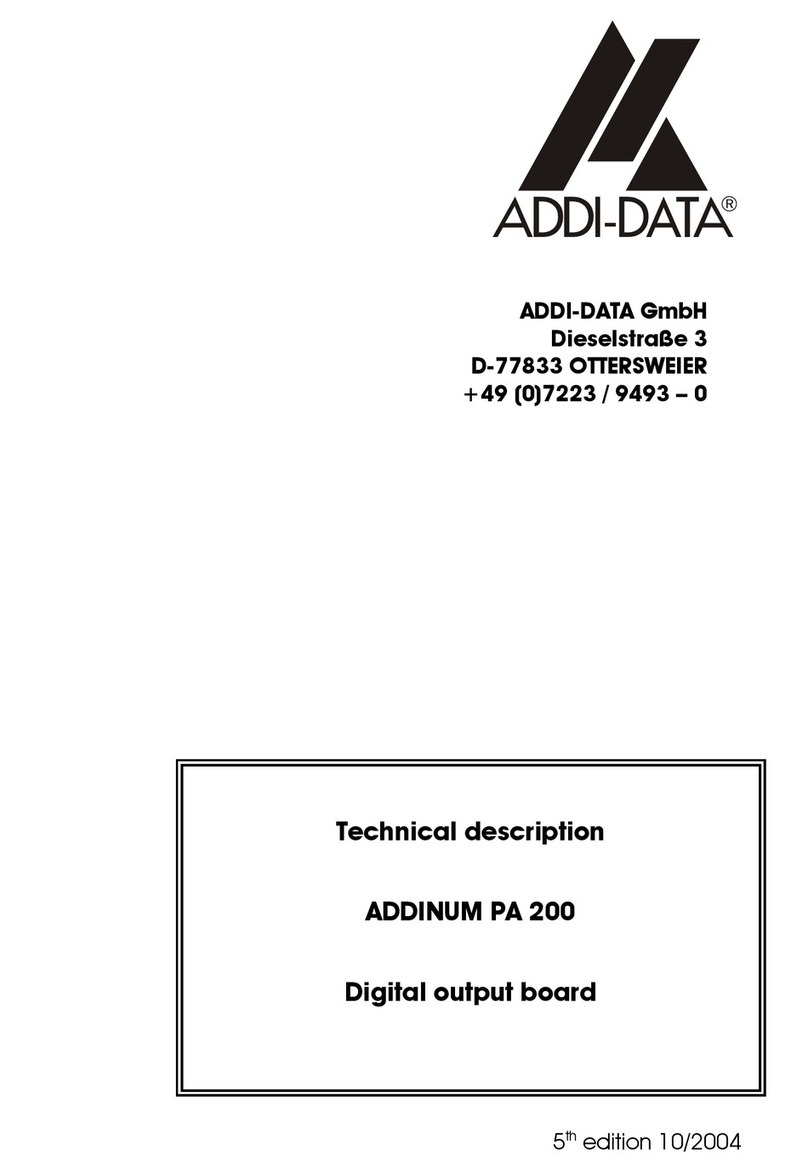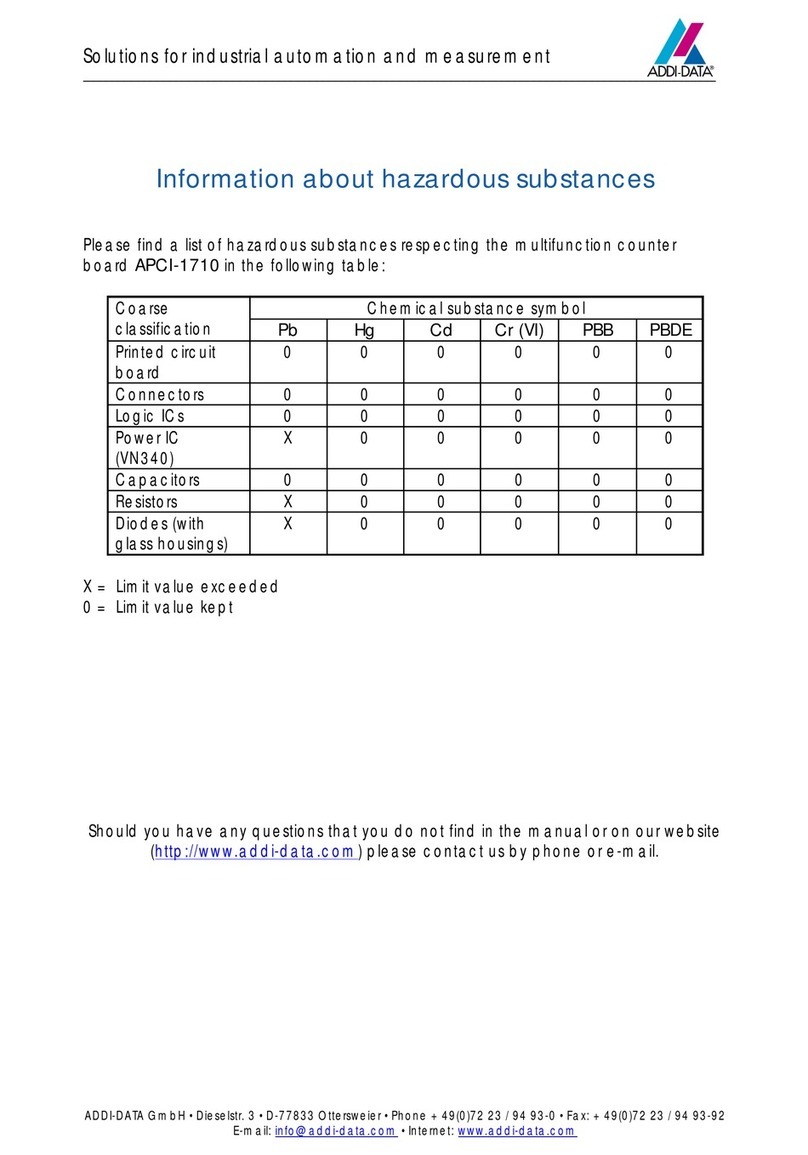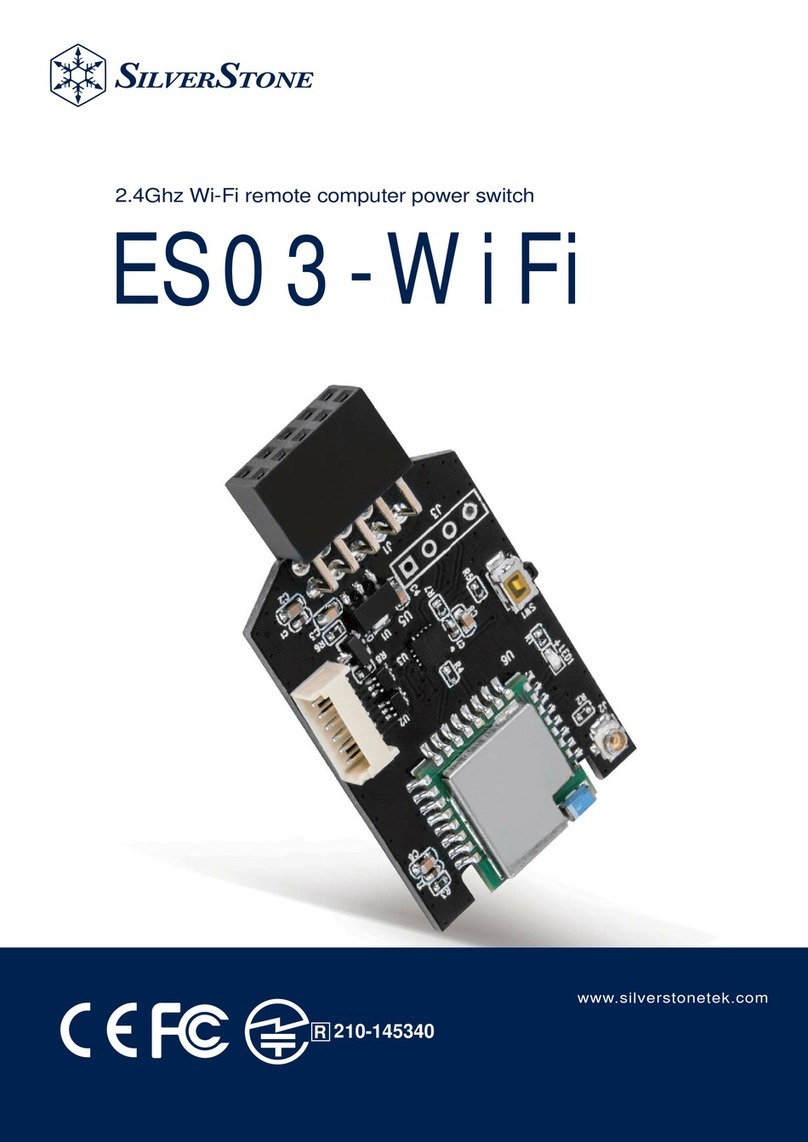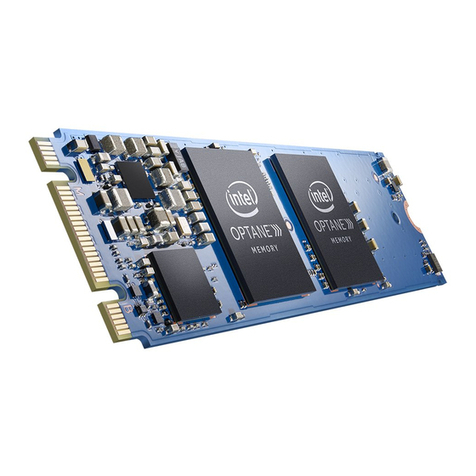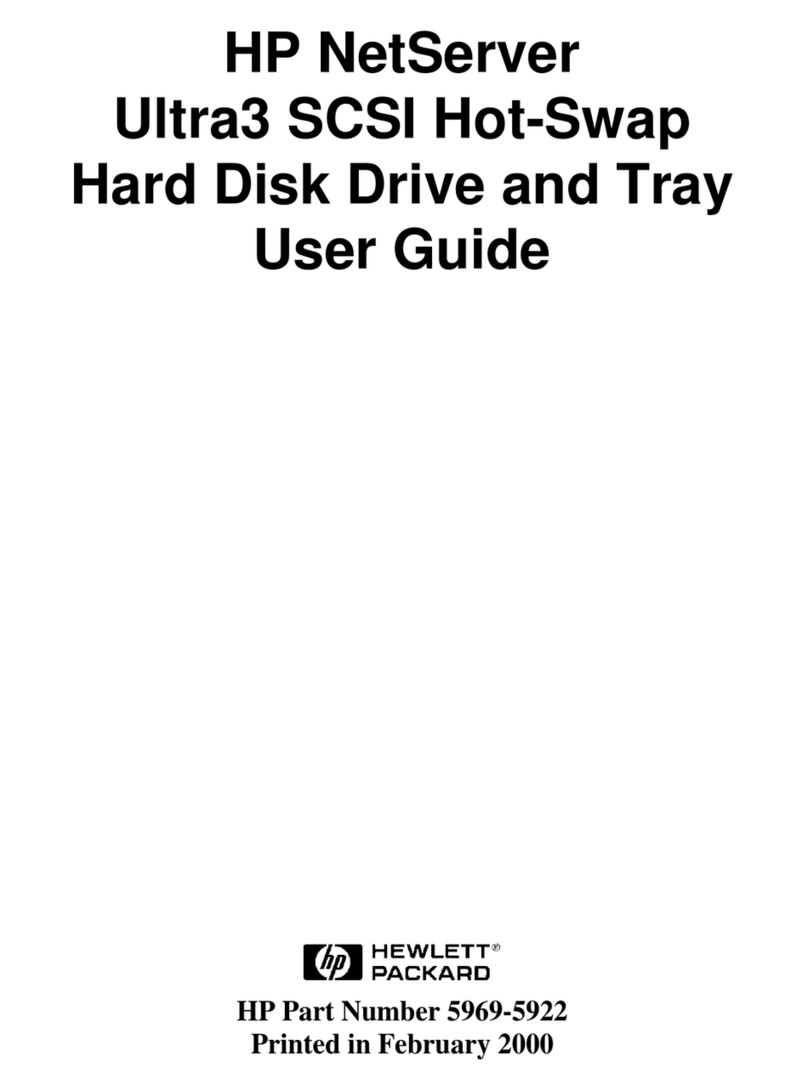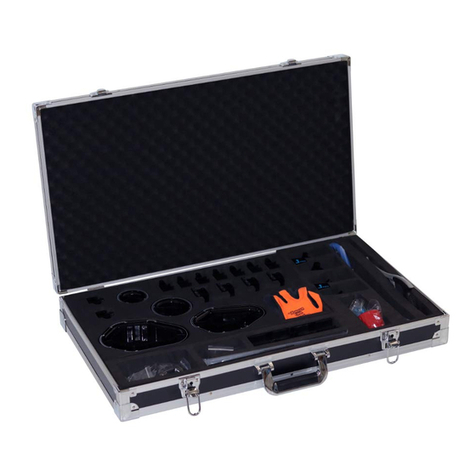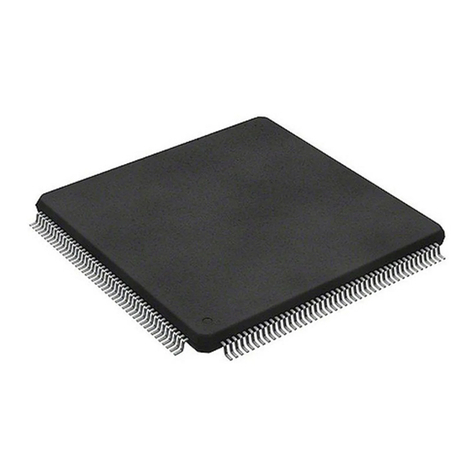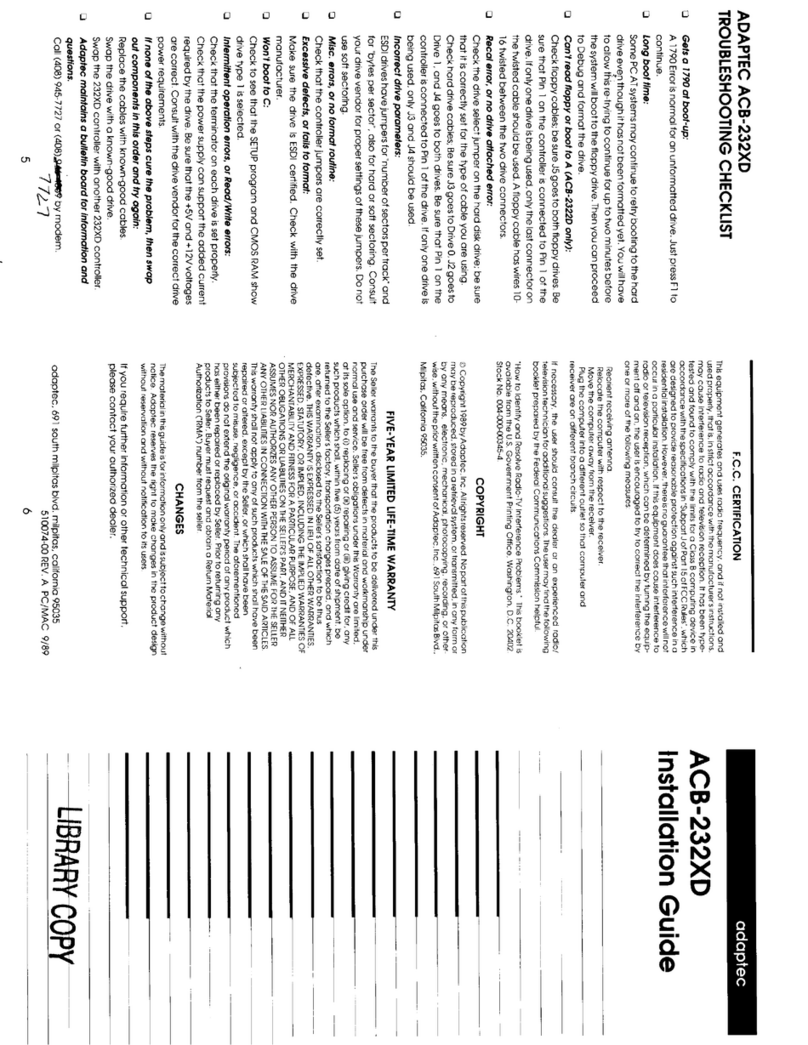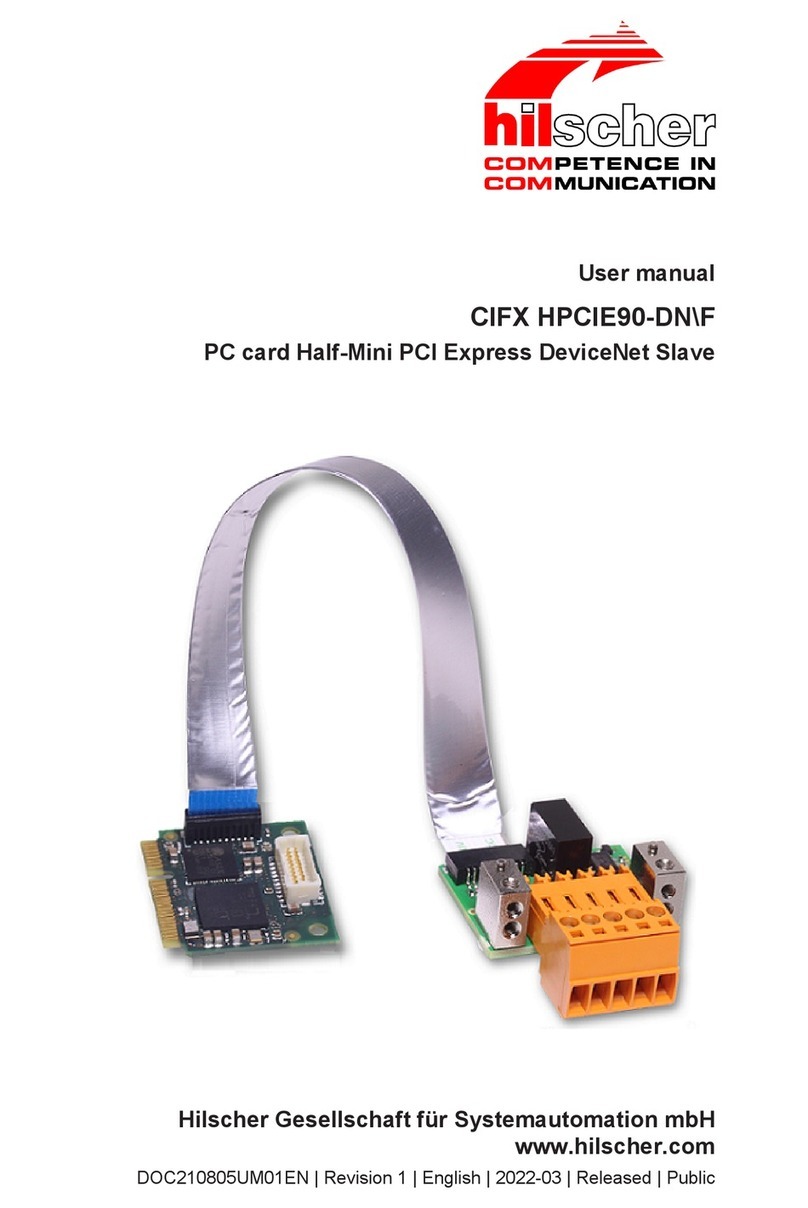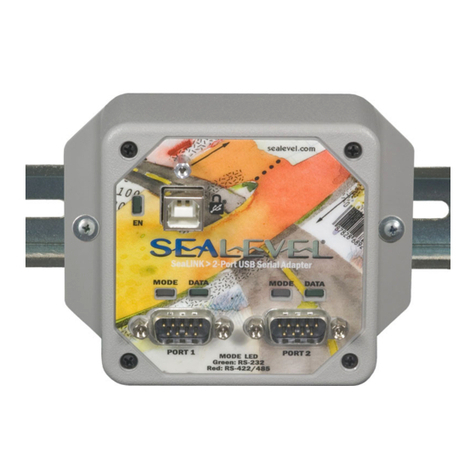Addi-Data ADDICOM APCI-7800 Parts list manual

DIN EN ISO 9001:2000
certified
A
DDI-DATA GmbH
Dieselstraße 3
D-77833 OTTERSWEIER
Technical support:
+49 (0)7223 / 9493 – 0
Technical description
ADDICOM APCI-7800
8-port serial interface
Edition: 05.02-1/2006

Product information
This manual contains the technical installation and important instructions for correct commissioning
and usage, as well as production information according to the current status before printing.
The content of this manual and the technical product data may be changed without prior notice.
ADDI-DATA GmbH reserves the right to make changes to the technical data and the materials
included herein.
Warranty and liability
The user is not permitted to make changes to the product beyond the intended use, or to interfere with
the product in any other way.
ADDI-DATA shall not be liable for obvious printing and phrasing errors. In addition, ADDI DATA, if
legally permissible, shall not be liable for personal injury or damage to materials caused by improper
installation and/or commissioning of the board by the user or improper use, for example, if the board is
operated despite faulty safety and protection devices, or if notes in the operating instructions regarding
transport, storage, installation, commissioning, operation, thresholds, etc. are not taken into
consideration. Liability is further excluded if the operator changes the board or the source code files
without authorisation and/or if the operator is guilty of not monitoring the permanent operational
capability of working parts and this has led to damage.
Copyright
This manual, which is intended for the operator and its staff only, is protected by copyright.
Duplication of the information contained in the operating instructions and of any other product
information, or disclosure of this information for use by third parties, is not permitted, unless this right
has been granted by the product licence issued. Non-compliance with this could lead to civil and
criminal proceedings.
ADDI-DATA software product licence
Please read this licence carefully before using the standard software. The customer is only granted the
right to use this software if he/she agrees with the conditions of this licence.
The software must only be used to set up the ADDI-DATA boards.
Reproduction of the software is forbidden (except for back-up and for exchange of faulty data
carriers). Disassembly, decompilation, decryption and reverse engineering of the software are
forbidden. This licence and the software may be transferred to a third party if this party has acquired a
board by purchase, has agreed to all the conditions in this licence contract and the original owner does
not keep any copies of the software.
Trademarks
-ADDI-DATA is a registered trademark of ADDI-DATA GmbH.
-Turbo Pascal, Delphi, Borland C, Borland C++ are registered trademarks of Borland Insight
Company.
-Microsoft C, Visual C++, Windows XP, 98, Windows 2000, Windows 95, Windows NT,
EmbeddedNT and MS DOS are registered trademarks of Microsoft Corporation.
-LabVIEW, LabWindows/CVI, DasyLab, Diadem are registered trademarks of National Instruments
Corp.
-CompactPCI is a registered trademark of PCI Industrial Computer Manufacturers Group.
-VxWorks is a registered trademark of Wind River Systems Inc.


WARNING
In case of wrong uses and if the board is not used for
the purpose it is intended:
♦people may be injured,
♦the board, PC and peripheral may be
destroyed,
♦the environment may be polluted
♦Protect yourself, the others and the environment!
♦Read carefully the safety precautions
(yellow leaflet).
If this leaflet is not with the documentation, please contact
us and ask for it.
♦Observe the instructions of the manual.
Make sure that you do not forget or skip any step. We are
not liable for damages resulting from a wrong use of the
board.
♦Used symbols:
iIMPORTANT!
designates hints and other useful information.
WARNING!
It designates a possibly dangerous situation.
If the instructions are ignored the board, PC and/or peripheral may
be destroyed.
4

Contents APCI-7800
1INTENDED PURPOSE OF THE BOARD......................8
1.1 Limits of use....................................................................10
2USER..................................................................11
2.1 Qualification ..................................................................11
2.2 Personal protection........................................................11
3HANDLING OF THE BOARD..................................12
4TECHNICAL DATA................................................13
4.1 Electromagnetic compatibility (EMC) ............................13
4.2 Physical set-up of the board..........................................13
4.3 Limit values.....................................................................14
4.3.1 RS232 ..................................................................................15
Without optical isolation (PM 232)........................................15
With optical isolation (PM232-G)..........................................15
4.3.2 RS422, RS485.......................................................................15
Without optical isolation (PM422, PM485)............................15
With optical isolation (PM422-G, PM485-G) .........................15
4.3.3 20mA current loop ..............................................................16
4.4 Component scheme.......................................................17
5INSTALLATION OF THE BOARD.............................19
5.1 Opening the PC..............................................................19
5.2 Selecting a free slot .......................................................19
5.3 Plugging the board into the slot ....................................20
5.4 Closing the PC ...............................................................20
6SOFTWARE .........................................................21
6.1 Board registration unter Windows NT.............................22
6.1.1 "More information" dialog box for serial interfaces ..............26
6.1.2 Registering a new board.....................................................27
6.1.3 Changing the registration of a board..................................27
6.2 Configuration under Windows XP/2000/98 ....................29
6.3 Board test.......................................................................30
6.4 Questions and software downloads on the web............30
5

Contents APCI-7800
7CONNECTING THE PERIPHERAL...........................31
7.1 Connector pin assignment.............................................31
7.2 Connection cables.........................................................34
7.3 Connection examples....................................................35
7.3.1 RS232 cabling .....................................................................35
7.3.2 RS422 cabling .....................................................................35
7.3.3 RS485 cabling .....................................................................36
7.3.4 Current loop (20 mA) cabling..............................................36
8TESTING THE BOARD...........................................38
8.1 Connecting a shorting plug...........................................38
8.2 Testing the board with the MTTTY program.....................40
RS422, RS232 and 20 mA Current Loop ..............................40
RS485 ..................................................................................41
9REPLACING THE MODULES..................................42
9.1 Replacing the SI modules ..............................................42
6

APCI-7800 Figures and Tables
Figures
Fig. 3-1: Correct handling................................................................12
Fig. 4-1: Component scheme of the APCI-7800 (left side) ..............17
Fig. 4-2: Component scheme of the APCI-7800 (right side) ............18
Fig. 5-1: PCI-5V slot (32-bit)...............................................................19
Fig. 5-2: Inserting the board.............................................................20
Fig. 5-3: Fastening the board at the back cover .............................20
Fig. 6-1: ADDIREG registration program (example)...........................22
Fig. 6-2: Board list under ADDIREG....................................................24
Fig. 6-3: Communication board......................................................26
Fig. 6-4: FIFO settings with the Device Manager ..............................29
Fig. 6-5: Setting example with the Device Manager: RS485 ............30
Fig. 7-1: 78-pin SUB-D male connector............................................31
Fig. 7-2: Connection cable ST7809 (8 x 9-pin) .................................34
Fig. 7-3: Connection cable ST7825 (8 x 25-pin) ...............................34
Fig. 7-4: RS232 cabling....................................................................35
Fig. 7-5: RS422 cabling....................................................................35
Fig. 7-6: RS485 cabling....................................................................36
Fig. 7-7: Active transmission/active reception..................................36
Fig. 7-8: Active transmission/passive reception................................37
Fig. 7-9: Passive transmission/active reception ................................37
Fig. 7-10: Passive transmission/passive reception ............................37
Fig. 8-1: Connection of the shorting plug for the RS422 mode........38
Fig. 8-2: Connection of the shorting plug for the RS422 mode........38
Fig. 8-3: Connection of the shorting plug for the 20 mA current loop
active transmission/passive reception.............................39
Fig. 8-4: Connection of the shorting plug for the 20 mA current loop
passive transmission/active reception.............................39
Fig. 8-5: The MTTTY program.............................................................40
Fig. 8-6: Handshake configuration for the board test.......................41
Fig. 9-1: Inserting the SI module.......................................................42
Fig. 9-2: Removing a SI module.......................................................42
Tables
Table 1-1: Intended purpose depending on the operating mode....9
Table 7-1: Pin assignment of port 1..................................................31
Table 7-2: Pin assignment of port 2..................................................31
Table 7-3: Pin assignment of port 3..................................................32
Table 7-4: Pin assignment of port 4..................................................32
Table 7-5: Pin assignment of port 5..................................................32
Table 7-6: Pin assignment of port 6..................................................33
Table 7-7: Pin assignment of port 7..................................................33
Table 7-8: Pin assignment of port 8..................................................33
7

APCI-7800 Intended purpose of the board
1INTENDED PURPOSE OF THE BOARD
The board APCI-7800 must be inserted in a PC with PCI 5V/32-bit slots,
which is used as electrical equipment for measurement, control and
laboratory use as defined in the norm IEC 61010-1.
The PC is to comply with the norm IEC61326 for measurement, control and
laboratory use and with the specifications for EMC protection.
Products complying with these specifications bear the CE mark.
The board APCI-7800 provides the personal computer (PC) with 8-port
asynchronous serial interface for the communication with external devices.
The operating mode of the interface depends on the SI modules installed.
The board is to be connected to the peripheral through a shielded cable,
which shielding should be grounded on both ends.
Minimum specifications of the connection cable:
- metallized plastic hoods
- shielded cable
- cable shield folded back and firmly screwed to the connector housing.
The board supports serial communication through 8 asynchronous serial
ports. The intended purpose of the board depends on the following
parameters (See Table 1-1).
8

APCI-7800 Intended purpose of the board
Table 1-1: Intended purpose depending on the operating mode
Module1Operating
mode Port
configuration
Distance between
transmitter and
receiver2
Environment
PM232
RS232
modem control signals connected
on the board (through ADDIREG)
or externally to the connector
30 m
industry
PM232-G
RS232
modem control signals connected
on the board (through ADDIREG)
or externally to the connector
30 m
noisy
industrial
environment
PMTTY
20 mA
Current
loop
current flows in rest state
1 km very noisy
industrial
environment
PM422 RS422 1.2 km noisy industrial
environment
PM422-G
RS422
1.2 km very noisy
industrial
environment
PM485
RS485 automatic transmitter control 200 m industry
transmitter control
DTR, RTS or data bit
1.2 km noisy industrial
environment
PM485-G RS485 automatic transmitter control 200 m industry
transmitter control
DTR, RTS or data bit
1.2 km very noisy
industrial
environment
1PMxxx-G: ex. PM232-G: module for the mode RS 232 with option G (optical isolation)
PMTTY: module for the mode 20 mA current loop. It is optically isolated as a standard.
2The max. lengths are for standard interface cables
9

APCI-7800 Intended purpose of the board
1.1 Limits of use
If the basic board is used with optically isolated modules and non isolated
modules, then the safety built by the creeping distance of 3.2 mm is not
ensured for the non isolated modules.
The use of the board in a PC could change the PC features regarding noise
emission and immunity. Increased noise emission or decreased noise
immunity could result in the system not being conform anymore.
Check the shielding capacity of the PC housing and cable prior to putting
the device into operation.
The use of the board according to its intended purpose includes observing
all advises given in this manual and in the safety leaflet.
Uses beyond these specifications are not allowed. The manufacturer is not
liable for any damages which would result from the non-observance of this
clause.
Make sure that the board remains in the protective blister pack
until it is used.
Do not remove or alter the identification numbers of the board.
If you do, the guarantee expires.
For all operating modes, the signal lines are to be twisted in pairs with
GND. Use exclusively connection cable with twisted pairs.
The housing of the peripheral connector
-is to be firmly screwed together with the shield of the cable.
-is to assure a low-resistance connection (< 100 mΩ) between the shield
and the housing of the PC.
The shield of the cable is to be earthed on both ends.
The APCI-7800 board is not to be used as safety related part for
securing emergency stop functions.
The emergency stop functions are to be secured separately.
This securing must not be influenced by the board or the PC.
The installation of the board APCI-7800 in sites lying under risk of
explosion is excluded.
Make sure that the board remains in its protective blister pack until it is used.
Do not remove or alter the identification numbers of the board.
If you do, the guarantee expires.
10

APCI-7800 User
2USER
2.1 Qualification
Only persons trained in electronics are entitled to perform the following
works:
-installation
-use,
-maintenance.
2.2 Personal protection
Consider the country-specific regulations about:
-the prevention of accidents
-electrical and mechanical installations
-radio interference suppression.
11

APCI-7800 Handling of the board
3HANDLING OF THE BOARD
Fig. 3-1: Correct handling
12

APCI-7800 Technical data
4TECHNICAL DATA
4.1 Electromagnetic compatibility (EMC)
The board has been subjected to EMC tests in an accredited laboratory. The
board complies with the limit values set by the norms IEC61326 as follows:
True value Set value
ESD (Discharge by contact/air) ................. 4/8 kV 4/8 kV
Fields.......................................................... 10 V/m 10 V/m
Burst ........................................................... 4 kV 2 kV
Conducted radio interferences ................... 10 V 10 V
Noise emissions.......................................... B class
4.2 Physical set-up of the board
The board is assembled on a 4-layer printed circuit card.
Dimensions:
312 mm
99 mm
Width: ............................................... 19.2 mm
Weight: ............................................. approx. 300 g
Installation in: .................................. 32/64-bit PCI slot 5 V
Connection to the peripheral1:
ST7809: ............................................ 8 x 9-pol. SUB-D male connector
ST7825: ............................................ 8 x 25-pin SUB-D male connector
1Not included in the delivery. Please order separately
13

APCI-7800 Technical data
4.3 Limit values
Max. altitude: ............................................ 2000 m
Operating temperature: .............................. 0 to 60°C
Storage temperature: ................................. -25 to 70°C
Relative humidity: ..................................... 30% to 99% non condensing
Minimum PC requirements:
PCI BIOS from Version 1.0
Bus speed: ................................................. < 33 MHz
Operating system: ..................................... Windows NT, 98, 2000, XP
Energy requirements:
- Operating voltage of the PC: .................. 5 V ±5%
- Current consumption (without load): ...... typ. see table ±10%
APCI-7800
+ 5 V from PC 425 mA
Add to this data the current consumption of the used modules according to
the following table:
PMxxx1PMxxx-G
RS 232 21 mA 48 mA
RS 422 5 mA 42 mA
RS 485 5 mA 54 mA
20 mA 51 mA -
1Module PMTTY or MXTTY (20 mA) is optically isolated as a standard.
14

APCI-7800 Technical data
4.3.1 RS232
CCITT-Empfehlung: ................................. V.24
US-Norm EIA: .......................................... RS 232
Without optical isolation (PM 232)
Max. transfer rate: ...................................
.
115.2 kBaud
Transfer rate on request...........................
.
-
ESD protection .......................................
.
-
With optical isolation (PM232-G)
Max. transfer rate: ................................... 115.2 kBaud
Transfer rate on request........................... -
ESD protection ....................................... 15 kV
Creeping distance: .................................. 3.2 mm
Test voltage:............................................ 1000 VAC
Short-circuit protection: .........................
4.3.2 RS422, RS485
CCITT recommendation: .......................... V.11
US norm EIA: ........................................... RS422, RS485
Without optical isolation (PM422, PM485)
Max. transfer rate: .................................... 115.2 kBaud
Transfer rate on request............................ -
ESD protection ........................................ -
Transorb diodes: ...................................... 400 W
Absorption power .................................... 1ms
Short-circuit protection: .......................... PTC
With optical isolation (PM422-G, PM485-G)
Max. transfer rate: ...................................... 115.2 kBaud
Transfer rate on request.............................. -
ESD protection .......................................... -
Transorb diodes: ........................................ 400 W
Absorption power ...................................... 1ms
Creeping distance: ..................................... 3.2 mm
Test voltage:............................................... 1000 VAC
Short-circuit protection: ............................ PTC
15

APCI-7800 Technical data
4.3.3 20mA current loop
PMTTY
Max. Baudrate:.......................................
.
19.2 kBaud
Transorb diodes: ....................................
.
400 W
Absorption power ..................................
.
1ms
Creeping distance: .................................
.
3.2 mm
Test voltage:...........................................
.
1000 VAC
Load: ......................................................
.
500 Ω
Voltage reversal and short-circuit protection through
Transorb diodes
The basic board has a transfer rate of max. 115.2 kBd in its standard
delivery (with standard quartz). If you wish to transmit at 1MBaud, then the
basic board has to be configured again in our house.
1MBd configuration: Please consider that the divider factors for
programming the transfer rate do not comply with the PC standard anymore.
The 1M Bd transfer rate can only be programmed with the device drivers
delivered with the board.
RS 485: transfer at 1 MBaud only works when the transmitter is controlled
through DTR, RTS or data bit.
16

APCI-7800 Technical data
4.4 Component scheme
Fig. 4-1: Component scheme of the APCI-7800
(left side)
17

APCI-7800 Technical data
Fig. 4-2: Component scheme of the APCI-7800
(right side)
18

APCI-7800 Installation of the board
5INSTALLATION OF THE BOARD
iIMPORTANT!
Do observe the safety precautions (yellow leaflet)!
5.1 Opening the PC
♦Switch off your PC and all the units connected to the PC.
♦Pull the PC mains plug from the socket.
♦Open your PC as described in the manual of the PC manufacturer.
5.2 Selecting a free slot
Insert the board in a free PCI-5V slot (32-bit).
Fig. 5-1: PCI-5V slot (32-bit)
Remove the back cover of the selected slot according to the instructions of
the PC manufacturer. Keep the back cover. You will need it if you remove
the board.
Discharge yourself from electrostatic charges.
Take the board out of its protective pack.
19

APCI-7800 Installation of the board
5.3 Plugging the board into the slot
♦Insert the board vertically into the chosen slot.
Fig. 5-2: Inserting the board
♦Fasten the board to the rear of the PC housing with the screw which
was fixed on the back cover.
Fig. 5-3: Fastening the board at the back cover
♦Tighten all the loosen screws.
5.4 Closing the PC
♦Close your PC as described in the manual of the PC manufacturer.
20
Table of contents
Other Addi-Data Computer Hardware manuals
Popular Computer Hardware manuals by other brands
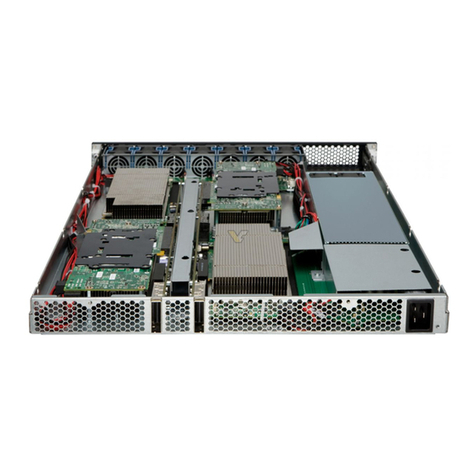
Nvidia
Nvidia Tesla S2050 installation guide
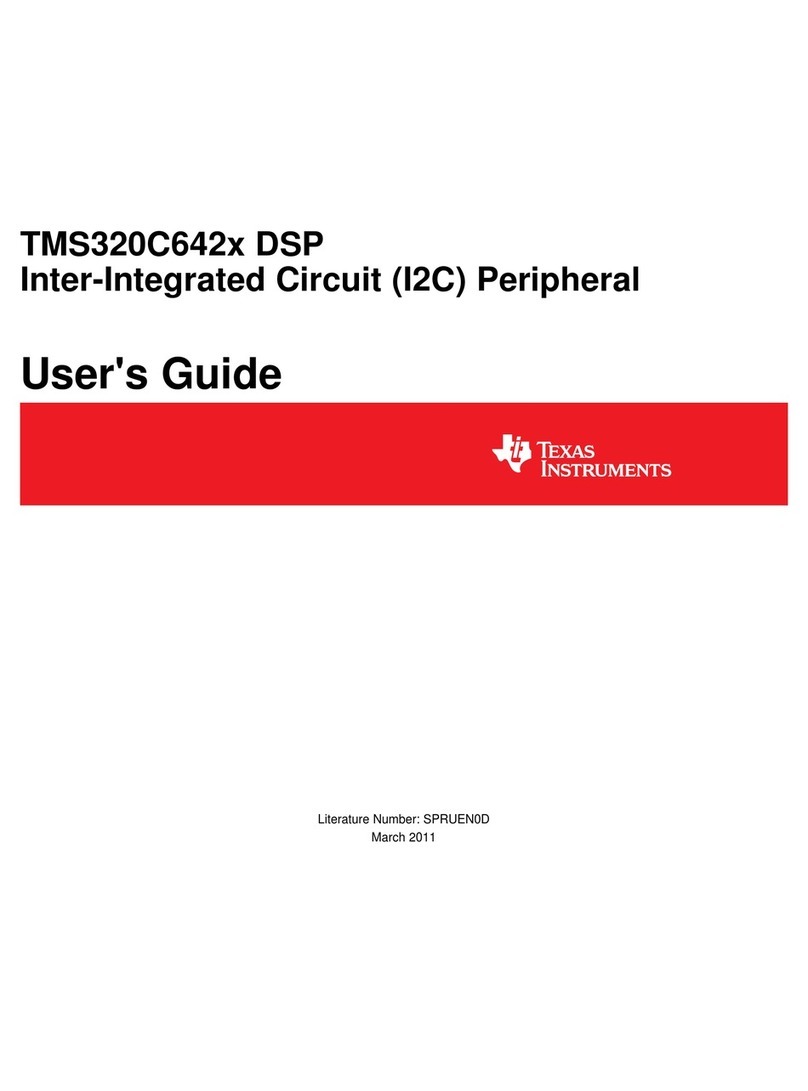
Texas Instruments
Texas Instruments TMS320C642x DSP user guide
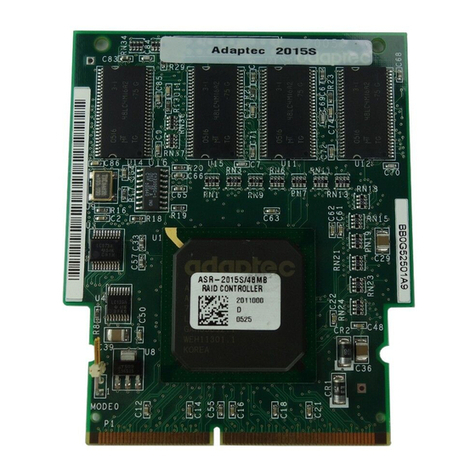
Adaptec
Adaptec 2010S - SCSI RAID Storage Controller Software user's guide
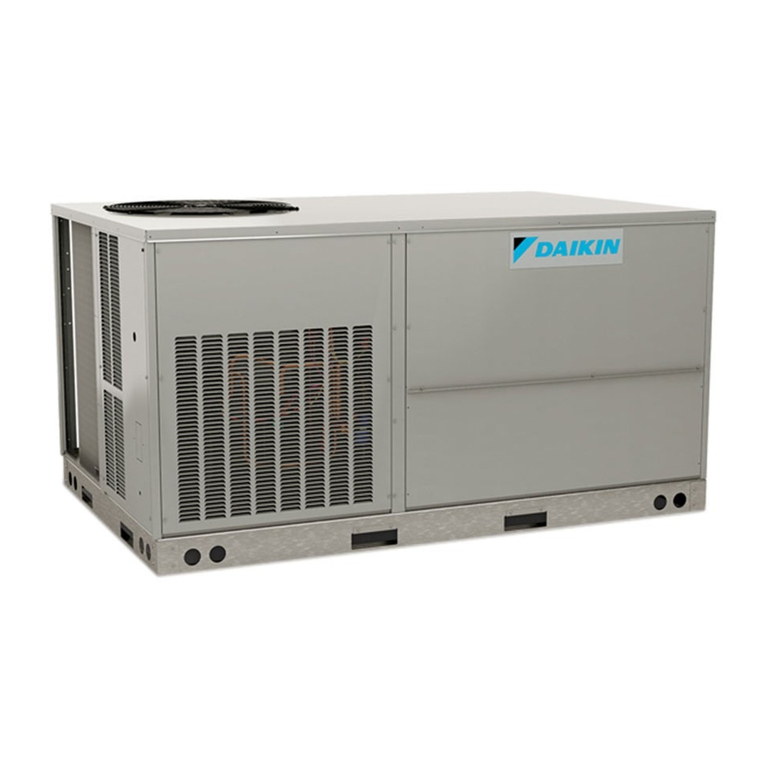
Daikin
Daikin DCC Series installation instructions
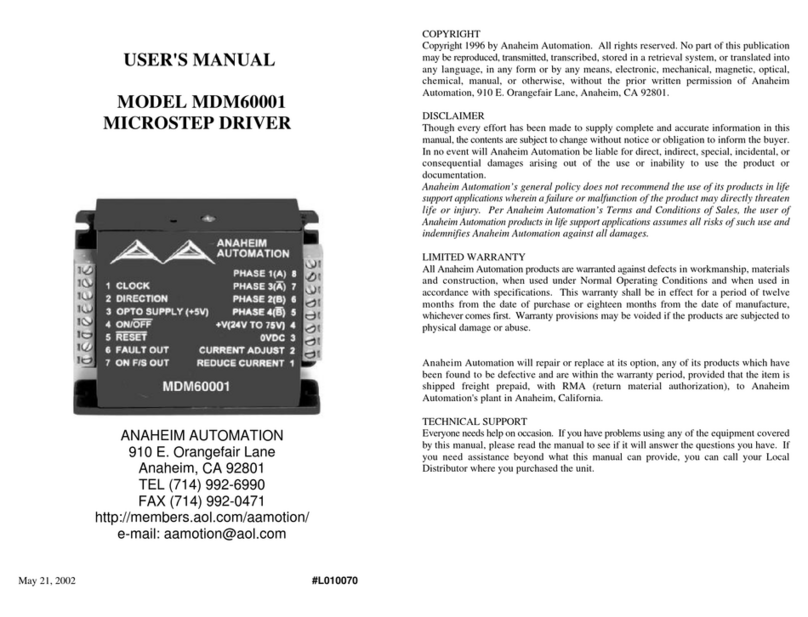
Anaheim Automation
Anaheim Automation MDM60001 user manual
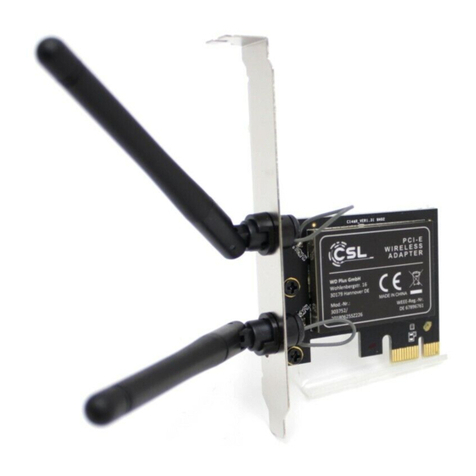
CSL
CSL 303752 user manual
